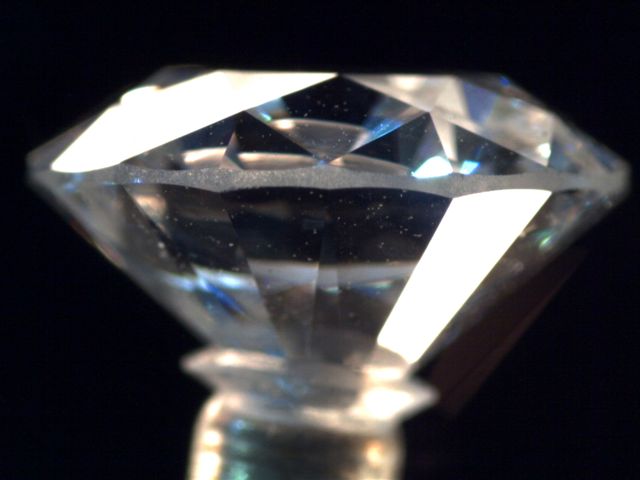A blemish on a diamond refers to an external imperfection or flaw that is visible on the surface of the diamond. These imperfections can affect the appearance and clarity of the stone and are one of the factors used in determining the diamond’s overall quality and value.
Key Points About Blemishes in Diamonds
Types of Blemishes: Blemishes can take several forms, depending on their nature and how they appear on the diamond’s surface. Some common types include:
Scratches: Fine lines or marks on the surface of the diamond caused by friction or contact with another object. They are often very small but can still affect the diamond’s clarity and appearance.
Nicks: Small chips or indentations that can occur on the diamond’s surface, often as a result of accidental impacts.
Pits: Tiny holes or depressions on the surface of the diamond, usually caused by natural growth conditions or external damage. These are often very small but noticeable under magnification.
Polish Lines: Shiny, sometimes curved lines on the surface of the diamond that result from the polishing process. These are typically not considered major flaws unless they are deep or visible to the naked eye.
Clouds: A series of very tiny inclusions or a grouping of them that can sometimes appear on the surface of the diamond. These may look like a hazy or cloudy area on the surface.
Knot: A type of blemish where an internal inclusion reaches the surface, causing a rough area or hole on the diamond’s surface. This is a significant flaw and may lower the clarity and value of the diamond.
Causes of Blemishes:
Cutting and Polishing Process: During the cutting and polishing stages, external imperfections may occur if the diamond is not handled carefully or the polishing wheel creates surface marks.
External Damage: Blemishes can also occur from external impacts or from the diamond coming into contact with other materials. A diamond can get scratched, chipped, or otherwise damaged if it strikes a hard surface or is exposed to abrasive materials.
Natural Growth: Some blemishes are natural features that form as the diamond is created under extreme heat and pressure. These marks can remain on the surface, especially if the stone has not been polished or cut to remove them.
Impact on Diamond Value:
The presence of blemishes can affect the clarity grade of a diamond. Diamonds with more or larger blemishes will generally receive a lower clarity grade because they detract from the stone’s overall appearance.
Blemishes that are visible to the naked eye are usually more detrimental to the diamond’s appearance and value than those that are only visible under magnification.
Minor blemishes, such as small polish lines or scratches that are barely visible, may have minimal impact on the diamond’s overall price, especially in diamonds with higher clarity grades. However, larger or more noticeable blemishes can significantly reduce the diamond’s value.
Blemish vs. Inclusions:
Blemishes are external flaws, whereas inclusions are internal imperfections that exist within the diamond. Both types of flaws are considered when grading a diamond’s clarity, but blemishes are typically easier to detect, especially when viewed under a jeweller’s loupe.
While inclusions are often hidden inside the diamond, blemishes are located on the surface and are therefore more likely to impact the diamond’s aesthetic appeal.
Blemish Detection:
Blemishes can often be detected through magnification (such as a jeweller’s loupe, typically 10x magnification), but some smaller blemishes may not be visible without a trained eye.
GIA (Gemological Institute of America) and other grading labs will examine diamonds for blemishes as part of the clarity grading process, where the diamond will be assessed for the presence of surface imperfections.
Dealing with Blemishes:
Professional Polishing: In some cases, blemishes can be removed or minimized by re-polishing the diamond. However, this process might cause a slight loss in carat weight, as a portion of the diamond’s surface may need to be ground away to eliminate the blemish.
Recutting: If a diamond has a large or deep blemish, it may be possible to recut the stone to remove the imperfection, though this would affect the diamond’s shape and carat weight.
Precautions:
To prevent blemishes, it’s important to handle diamonds with care. When cleaning or storing a diamond, avoid exposing it to harsh chemicals or abrasive materials that could cause scratches or other damage. Additionally, when setting a diamond into jewellery, care should be taken to avoid causing any surface damage.
